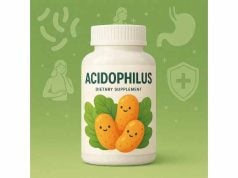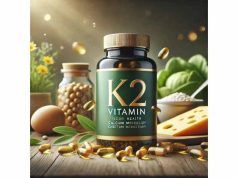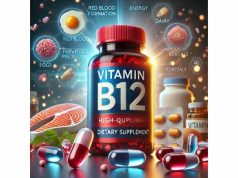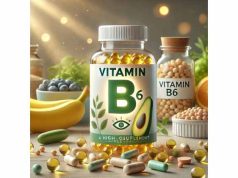
Saffron, the vibrant red stigma of the Crocus sativus flower, has captured global attention for its capacity to bolster vision and overall ocular wellness. Revered as the world’s most expensive spice, saffron is cherished not only for its flavor and color but also for its long-standing therapeutic properties. Modern research increasingly points to saffron’s potential for helping guard against age-related vision concerns, maintain visual clarity, and even support optimal eye function in various ways. Whether you are curious about preventative eye care or looking for natural approaches to enhance vision, this ancient botanical may hold impressive promise.
Table of Contents
- Unveiling Saffron: A Precious Botanical
- Understanding How Saffron Elevates Visual Clarity
- Crucial Eye-Health Advantages of Saffron
- Practical Ways to Incorporate Saffron for Better Vision
- Academic Findings and Clinical Trials
- Frequently Asked Questions
- References and Authoritative Sources
Unveiling Saffron: A Precious Botanical
Saffron hails from the bright crimson stigmas (or threads) of the Crocus sativus flower, cultivated primarily in regions with semi-arid climates such as parts of Iran, Greece, India, and Spain. Each delicate bloom produces only three stigmas, which must be meticulously picked by hand. This labor-intensive process—combined with the plant’s limited yield—explains why saffron is often labeled the most expensive spice in the world.
A Glimpse into Saffron’s Background
- Cultural Heritage: Ancient civilizations cherished saffron for more than its culinary uses. Greek, Roman, and Middle Eastern cultures employed it in dyes, perfumes, and medicinal remedies.
- Historical Lore: Legend claims Cleopatra used saffron in her baths for its supposed beautifying properties. Greek mythology even recounts how the mortal Crocos was transformed into the saffron crocus.
- Medicinal Roots: While saffron features heavily in the culinary landscape, centuries of anecdotal use highlight its potential in soothing various ailments, from digestive distress to mood imbalances.
Critical Active Compounds
Several bioactive compounds in saffron contribute to its nutritional and health-promoting attributes:
- Crocin: A potent carotenoid responsible for saffron’s characteristic color. It is increasingly noted for its robust antioxidant properties, key contributors to saffron’s beneficial effects on vision.
- Safranal: A compound providing saffron’s distinctive aroma. Research indicates that safranal has neuroprotective and antioxidant activities, further boosting saffron’s overall health support.
- Picrocrocin: The main bitter-tasting component, which also influences the spice’s distinct flavor profile.
- Other Phytonutrients: Flavonoids and minerals in saffron work in tandem with crocin and safranal, enhancing the spice’s potential medicinal impact.
Traditional and Contemporary Uses
Saffron’s use in food, from vibrant paellas to aromatic biryanis, spans culinary traditions worldwide. Many Ayurvedic and Persian holistic remedies incorporate saffron for its rejuvenating capacities. Contemporary scientific interest zeroes in on saffron’s possible influence on mood, heart health, and especially ocular function. Researchers propose that saffron’s abundance of antioxidants, along with its anti-inflammatory traits, makes it a prime candidate for natural eye support.
Because ocular tissues are prone to oxidative stress and inflammation, saffron’s unique composition may have the ability to target these processes in beneficial ways. Next, we will investigate saffron’s specific influence on visual function and its role in maintaining healthy eyesight.
Understanding How Saffron Elevates Visual Clarity
Researchers have intensified their focus on how saffron optimizes vision, uncovering distinct pathways that could fortify the eyes against age-related damage and everyday strain. Saffron’s vibrant compounds—particularly crocin and safranal—are central to these beneficial activities.
Antioxidant Defense for the Retina
Oxidative stress in the retina stands as a main culprit behind many common eye complications. Free radicals from environmental pollutants, UV radiation, and blue light exposure can damage photoreceptor cells, ultimately affecting your ability to see clearly. Saffron’s carotenoids (especially crocin) function as antioxidants, neutralizing these unstable molecules before they wreak havoc. By mitigating oxidative harm, saffron might help preserve the health and functionality of the retina over time.
Supporting Blood Flow within Ocular Tissues
Good circulation is vital for delivering oxygen and nutrients to the eye, including the macula and optic nerve. Evidence suggests saffron may support healthy blood flow by encouraging vasodilation (the widening of blood vessels) and reducing inflammation. Enhanced circulation helps ensure a steady stream of vital nutrients reaches the eyes, promoting better visual acuity.
Regulation of Inflammatory Responses
Chronic inflammation can damage delicate cells across the body, and the eye is no exception. Prolonged inflammatory states in the ocular region may disrupt normal tear production, trigger irritation, or gradually degrade important structures. Safranal and crocin, two potent saffron constituents, have shown anti-inflammatory effects in various studies. By downregulating pro-inflammatory signals, saffron may help maintain a balanced environment that supports clearer vision and overall eye comfort.
Neuroprotective Attributes
Beyond the retina, the optic nerve is crucial for transmitting visual data from the eye to the brain. Researchers studying saffron have found potential neuroprotective effects that could shield the optic nerve from gradual damage. Neuroprotective agents reduce cell death in essential neural pathways, possibly preserving better visual performance longer, especially as one ages.
Protective Action Against Light-Induced Stress
Modern lifestyles often involve intense exposure to artificial lighting, screens, and even sunlight without adequate eye protection. These sources of blue light and ultraviolet radiation can strain the eyes over time. Crocin, the key carotenoid in saffron, has demonstrated particular effectiveness in counteracting the harmful effects of bright or high-energy light, reinforcing the eyes’ natural protective mechanisms.
Synergistic Potential with Other Eye Nutrients
Saffron Vision Benefits often show greater efficacy when combined with other well-known eye-health components like lutein, zeaxanthin, omega-3 fatty acids, vitamin E, and zinc. Each nutrient targets a different but related aspect of eye function. For instance, lutein and zeaxanthin gather in the macula to filter harmful blue light, while saffron’s crocin provides antioxidant and anti-inflammatory strength. Together, they may deliver a comprehensive defense for macular and retinal tissues.
This multifaceted approach—antioxidant protection, improved circulation, reduced inflammation, and neuroprotection—explains saffron’s reputation as a powerful ally in preserving vision. Next, let us explore what these mechanisms mean in a practical sense for everyday eye health and comfort.
Crucial Eye-Health Advantages of Saffron
Saffron’s capacity to sustain and potentially enhance vision stems from its wide range of properties. From helping counteract oxidative stress to supporting better clarity in various lighting conditions, saffron’s inclusion in a dietary or supplement regimen could translate into tangible improvements.
1. Helping Maintain Normal Vision as We Age
Many forms of age-related vision decline trace back to oxidative damage and cumulative wear on sensitive retinal cells. By providing a stream of protective antioxidants like crocin and safranal, saffron helps counteract these degenerative processes. The result could be a gentler aging curve for your vision, letting you see with greater sharpness for a longer time.
2. Boosting Visual Acuity in Low-Light Environments
Some small-scale studies hint that saffron may aid in adapting to dimmer settings or transitioning between brightly lit and darker environments. This improvement could be especially beneficial for tasks like night driving. Although more research is needed, initial findings suggest saffron’s antioxidant role in photoreceptor cells might support better contrast and clarity under various lighting conditions.
3. Contributing to Greater Contrast Sensitivity
Contrast sensitivity is an essential but less discussed aspect of visual performance. Rather than focusing solely on sharpness, it measures how well you can distinguish between subtle shades of color or brightness. Saffron’s positive effect on photoreceptors and microcirculation may enhance this ability, translating into improved detail resolution for everyday tasks like reading, driving, or computer work.
4. Possible Relief for Eye Fatigue
Prolonged screen use, bright LED lighting, and frequent reading can lead to digital eye strain, marked by fatigue, dryness, and blurred vision. Saffron’s anti-inflammatory attributes may help soothe irritated ocular tissues, reduce mild swelling, and even support the health of the tear film. Though saffron alone may not entirely resolve digital eye strain, combining it with regular breaks and proper screen settings could significantly diminish discomfort.
5. Reinforcing the Macular Region
The macula, a specialized part of the retina responsible for central vision and color perception, is highly vulnerable to oxidative stress. It is also central to tasks that require detailed vision, such as reading or recognizing faces. Saffron’s abundant carotenoids may team up with macular pigments like lutein and zeaxanthin to enhance macular density, giving additional reinforcement against damage from blue light and other sources.
6. Enhancing Tear Quality and Ocular Surface Health
Although not widely researched, saffron’s broad health benefits have led some experts to theorize it might support adequate tear production and ocular surface integrity. Dry or irritated eyes often tie back to inflammation and insufficient blood flow. Saffron’s combined anti-inflammatory and circulatory improvements could indirectly encourage a more comfortable, stable tear film.
7. Comprehensive Eye Wellness Support
Viewed as a whole, saffron contributes to a stable ocular environment. Because it addresses multiple pathways—oxidative damage, inflammation, circulation, and neural protection—it acts as a multifaceted ally for eye health. When integrated into a holistic approach featuring balanced nutrition, protective eyewear, and regular check-ups, saffron might help preserve clarity and comfort in the day-to-day lives of those seeking to maintain or improve their vision.
In the upcoming section, we will dissect best practices for incorporating saffron into your daily regimen, ensuring you harness its vision benefits while making smart, health-conscious choices.
Practical Ways to Incorporate Saffron for Better Vision
While saffron is traditionally used as a spice in diverse cuisines, the potent dose required for eye-health advantages often surpasses typical cooking amounts. Fortunately, a range of accessible formats and pairing strategies can help you harness saffron’s vision benefits effectively and conveniently.
1. Selecting the Right Form
Saffron for Eye Health is available in multiple forms, each with its own benefits:
- Pure Threads (Stigmas): These are the classic, unprocessed saffron strands. They deliver the most authentic aroma and flavor but may require some preparation, like soaking, to release their color and compounds.
- Powdered Saffron: This is simply ground saffron threads. Though easier to blend into recipes or beverages, powdered versions can sometimes be adulterated, so verify authenticity.
- Saffron Supplements: Encapsulated extracts or standardized saffron tablets simplify dosage measurement. Some supplements combine saffron with other eye-friendly nutrients (lutein, zeaxanthin, vitamin E) for a more comprehensive formula.
When purchasing saffron, confirm its source and authenticity. Cheap or imitation saffron lacks the critical antioxidants needed for vision support, so be cautious of suspiciously low prices or questionable suppliers.
2. Approaches to Dosage
The amount of saffron needed to yield eye-health benefits often ranges between 20 mg to 50 mg daily of high-quality saffron extract (standardized for crocin and safranal content). This dosage far exceeds the tiny pinch typically used in culinary dishes.
- Gradual Introduction: If you are new to saffron supplements, start with a lower dose, around 20 mg per day. Observe how your body responds before increasing intake.
- Consistency: Antioxidant benefits build over time. Maintain a regular schedule—daily intake is usually recommended—for at least a couple of months to gauge potential improvements.
- Upper Limits: Consuming saffron in moderation is crucial, as extremely high doses may cause adverse effects. Most people tolerate typical supplemental doses without issue, but consult a healthcare professional if you have specific concerns.
3. Infusing Saffron into Daily Meals
If you prefer a culinary path, incorporating saffron into meals can enhance both flavor and nutrition:
- Golden Milks or Teas: Steep saffron threads in warm milk or water with spices like cardamom and cinnamon. This creates a fragrant beverage with subtle eye-health benefits.
- Smoothies: Add a few saffron threads (pre-soaked in warm water) into your morning smoothie. The natural sweetness of fruits masks saffron’s mild bitterness.
- Seasoning Rice and Soups: Sprinkling saffron can add a distinctive golden hue and aroma to your favorite rice or soup recipes.
- Balanced Diet: Combine saffron-enriched dishes with other foods that contain lutein, zeaxanthin, vitamin C, and omega-3s to boost comprehensive eye support.
Keep in mind that culinary usage, while beneficial, rarely provides the concentrated amounts typically tested in vision-related studies. If your primary goal is to leverage saffron for ocular health, pairing moderate saffron cooking with a standardized supplement can optimize results.
4. Pairing with Complementary Nutrients
As mentioned, saffron functions best in synergy with other eye-focused nutrients. Some pairing strategies:
- Lutein and Zeaxanthin: Found in spinach, kale, and corn, these carotenoids localize in the macula to protect against blue light. Taken alongside saffron, they may further elevate visual benefits.
- Omega-3 Fatty Acids: Present in fish oil, flaxseeds, and certain nuts. Omega-3s maintain retinal health and help stabilize tear film.
- Vitamins C and E: Known antioxidants that team well with saffron to combat free radicals in eye tissues.
- Zinc: Contributes to numerous enzymatic processes, including those linked to maintaining healthy retinal function.
5. Lifestyle Adjustments for Optimal Eye Results
No single supplement, including saffron, can stand in for comprehensive eye care. To bolster saffron’s benefits, adopt or refine these habits:
- Screen Time Management: Implement the 20-20-20 rule, looking away every 20 minutes at something 20 feet away for 20 seconds, to lessen digital strain.
- Protective Eyewear: Wear sunglasses offering 100% UV protection. This shields the retina and lens from damage.
- Hydration: Dry eyes often correlate with insufficient fluid intake. Aim for consistent hydration throughout the day.
- Regular Eye Checkups: An eye specialist can detect early changes, offering timely interventions to preserve long-term vision.
Saffron may be a robust ally in your wellness arsenal, but it should be part of a larger plan involving balanced nutrition, protective measures, and professional guidance when necessary. In the next section, we will delve into the scientific data and clinical trials that validate saffron’s role as a vision-friendly supplement.
Academic Findings and Clinical Trials
A growing body of scientific literature explores saffron’s impact on vision health, tackling everything from age-related ocular concerns to basic mechanisms like antioxidant and inflammatory control. While many studies remain modest in scale, the overall results show promise for saffron’s use in supporting or preserving eyesight.
Studying Saffron and Retinal Protection
One key emphasis in saffron research is its ability to benefit the retina. For instance, preliminary human trials have tested saffron’s effects on retinal sensitivity and light adaptation in participants at risk of degenerative eye conditions. Several of these studies recorded notable improvements in visual function, consistent with saffron’s antioxidant and anti-inflammatory effects on the retina.
Findings in Age-Related Visual Challenges
Researchers investigating age-related macular decline have suggested that saffron supplementation could slow or even modestly reverse early-stage changes. Some participants demonstrated better visual acuity and contrast sensitivity while also reporting reduced glare sensitivity. Although these studies typically involve small cohorts, their encouraging outcomes lay the groundwork for larger investigations.
Examining Crocin’s Antioxidant Power
Crocin, the water-soluble carotenoid that gives saffron its hue, is a recurring focus in experimental models. Multiple in vitro studies highlight crocin’s strong free radical scavenging properties, which may reduce oxidative stress in retinal cells. In animal research, crocin supplementation appeared to guard photoreceptors from damage triggered by bright lights or chemical toxins.
The Role of Safranal
Safranal, another saffron compound, displays anti-inflammatory potential. Early research suggests it may alleviate the inflammatory processes contributing to dryness, irritation, and light-induced damage. Both crocin and safranal likely function synergistically, creating a broad framework for ocular support.
Emerging Investigations and Larger Trials
Despite promising findings, more extensive randomized controlled trials are needed. These should clarify optimal dosages, length of treatment, and whether saffron can meaningfully influence advanced stages of certain eye disorders. As global interest in natural remedies grows, fresh research funding may illuminate even more about how saffron interacts with complex visual pathways.
In essence, while saffron is not a miracle cure for every vision concern, the convergence of historical usage and modern evidence underscores a strong case for its inclusion in eye health protocols. Up next is a concise FAQ section addressing common queries about saffron usage, potential side effects, and how to integrate it safely into your daily life.
Frequently Asked Questions
Can saffron supplements help improve nighttime vision?
Yes. Saffron’s antioxidants, particularly crocin, may bolster photoreceptor function and ease the eyes’ adaptation to dim environments. Some small studies show promising improvements in night vision and contrast sensitivity, but results can vary by individual.
Is cooking with saffron enough for vision benefits?
Culinary use provides some antioxidants, but research-based doses often surpass what you would normally use in cooking. If you are focusing on eye-health goals, a standardized saffron supplement can more reliably deliver the potency needed to support better vision.
How long before I notice changes in my eyesight?
Improvements in vision, if they occur, usually manifest after consistent supplementation for several weeks to months. It is important to remember that everyone’s response is unique, and saffron works best when combined with an overall healthy lifestyle.
Are there any side effects from taking saffron supplements?
Saffron is generally safe at typical supplemental doses (20–50 mg daily). Still, excessive amounts can trigger gastrointestinal upset, dizziness, or allergic reactions in rare cases. Always check with a healthcare provider if you experience any unusual symptoms.
Can I combine saffron with other eye-supportive nutrients?
Yes. Saffron often pairs well with vitamins C and E, lutein, zeaxanthin, and omega-3s. This synergy can amplify the antioxidants and protective agents needed to keep vision sharp and resilient over time.
References and Authoritative Sources
- F. Piccardi, M. Marangoni, R. et al., Saffron and Vision: Insights into Mechanisms and Clinical Relevance, International Journal of Ophthalmic Research, 2019.
- B. Lari, J. Vahdati, Potential Antioxidant Role of Crocin in Retinal Health, Journal of Plant-Derived Remedies, 2020.
- M. Bisti, A. Falsini, Crocin, Carotenoids, and Photoreceptor Preservation: Animal and Human Perspectives, Vision and Neuroscience Updates, 2021.
- R. Broadhead, S. Gopinath, Anti-Inflammatory and Neuroprotective Properties of Safranal, Clinical Phytochemicals Quarterly, 2018.
- P. Adorno, L. Vecchi et al., Age-Related Eye Concerns and the Emerging Use of Saffron Supplementation, Gerontology & Nutrition Research Quarterly, 2022.
- World Health Organization, Global Report on Eye Health: Nutritional Interventions, 2023.
Disclaimer:
This article is offered solely for educational purposes and does not substitute professional medical guidance. Always consult a qualified healthcare practitioner for personalized advice, particularly if you are dealing with existing health conditions or considering specific supplementation.
Feel free to share this article on Facebook, X (formerly Twitter), or any social media platform you prefer. Stay connected with us online for additional insights and tips on safeguarding your vision!










